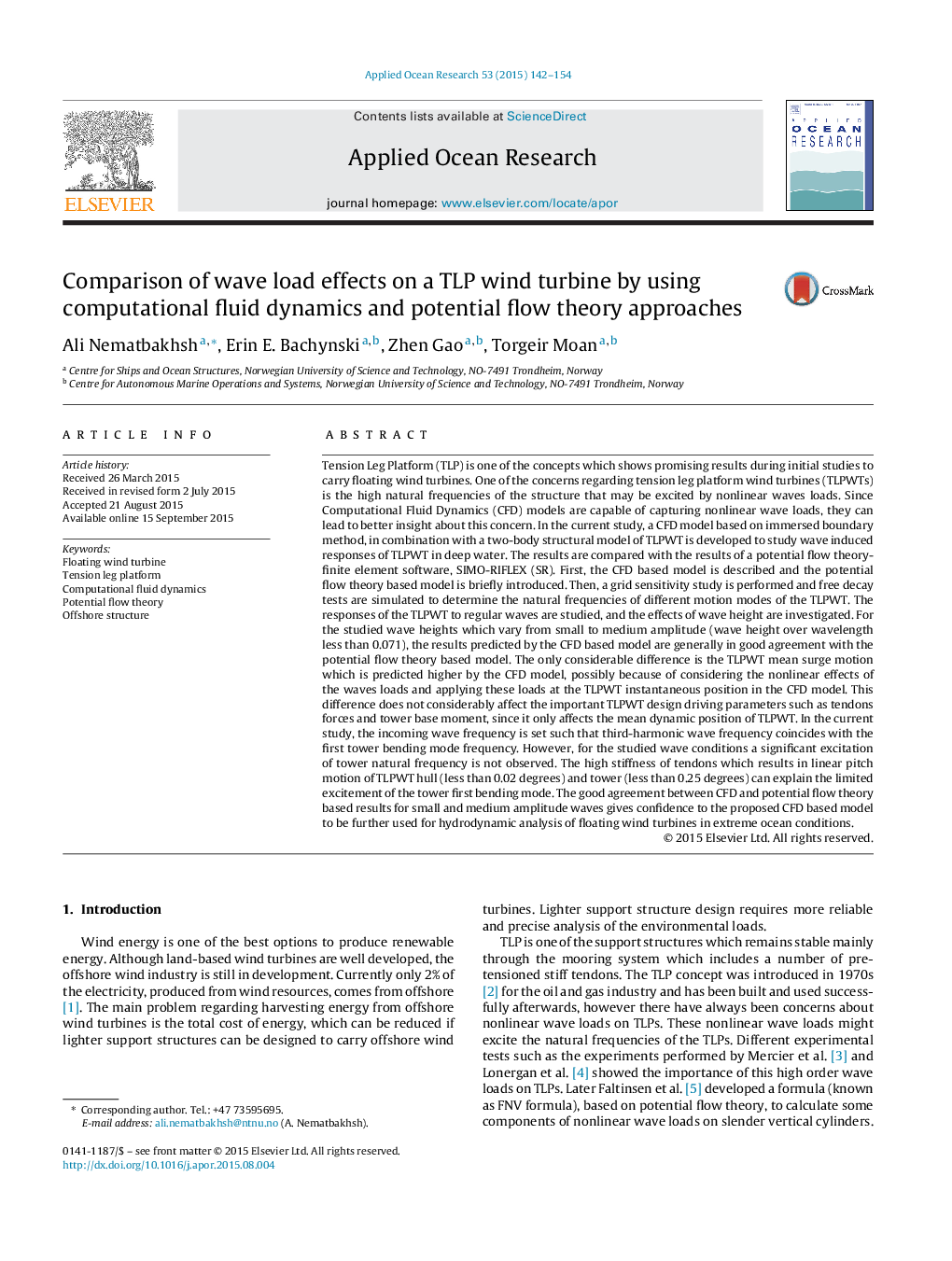| Article ID | Journal | Published Year | Pages | File Type |
|---|---|---|---|---|
| 1719908 | Applied Ocean Research | 2015 | 13 Pages |
•CFD-structural model for hydrodynamic analysis of TLP wind turbine is developed.•Results comparison with potential theory based model shows generally good agreement.•The model shows different mean dynamic position compared to the potential theory model.•This difference does not considerably affect tendon forces and tower base bending moment.
Tension Leg Platform (TLP) is one of the concepts which shows promising results during initial studies to carry floating wind turbines. One of the concerns regarding tension leg platform wind turbines (TLPWTs) is the high natural frequencies of the structure that may be excited by nonlinear waves loads. Since Computational Fluid Dynamics (CFD) models are capable of capturing nonlinear wave loads, they can lead to better insight about this concern. In the current study, a CFD model based on immersed boundary method, in combination with a two-body structural model of TLPWT is developed to study wave induced responses of TLPWT in deep water. The results are compared with the results of a potential flow theory-finite element software, SIMO-RIFLEX (SR). First, the CFD based model is described and the potential flow theory based model is briefly introduced. Then, a grid sensitivity study is performed and free decay tests are simulated to determine the natural frequencies of different motion modes of the TLPWT. The responses of the TLPWT to regular waves are studied, and the effects of wave height are investigated. For the studied wave heights which vary from small to medium amplitude (wave height over wavelength less than 0.071), the results predicted by the CFD based model are generally in good agreement with the potential flow theory based model. The only considerable difference is the TLPWT mean surge motion which is predicted higher by the CFD model, possibly because of considering the nonlinear effects of the waves loads and applying these loads at the TLPWT instantaneous position in the CFD model. This difference does not considerably affect the important TLPWT design driving parameters such as tendons forces and tower base moment, since it only affects the mean dynamic position of TLPWT. In the current study, the incoming wave frequency is set such that third-harmonic wave frequency coincides with the first tower bending mode frequency. However, for the studied wave conditions a significant excitation of tower natural frequency is not observed. The high stiffness of tendons which results in linear pitch motion of TLPWT hull (less than 0.02 degrees) and tower (less than 0.25 degrees) can explain the limited excitement of the tower first bending mode. The good agreement between CFD and potential flow theory based results for small and medium amplitude waves gives confidence to the proposed CFD based model to be further used for hydrodynamic analysis of floating wind turbines in extreme ocean conditions.
